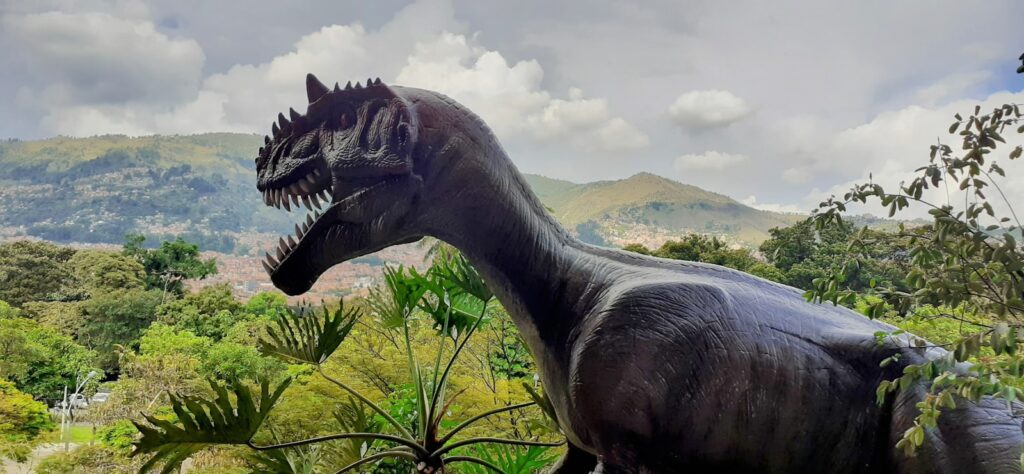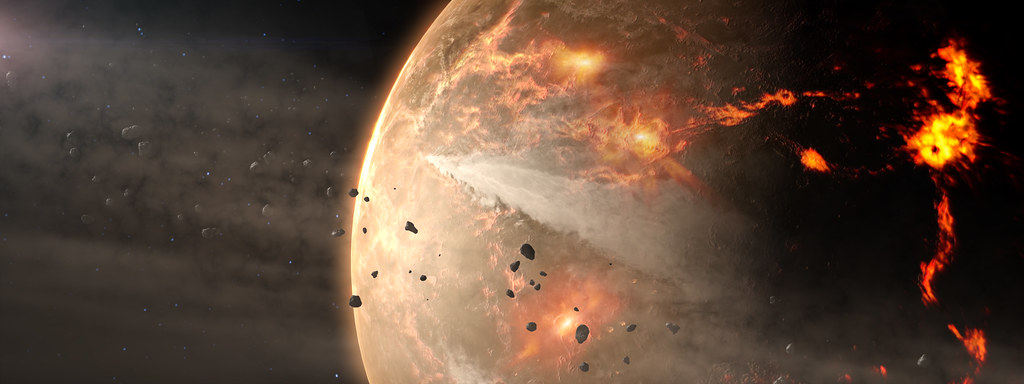Most people think of Montana or Wyoming when they picture American dinosaur country, but Missouri has its own fascinating prehistoric past hiding beneath the rolling hills and farmlands. While the Show-Me State might not have the towering fossil beds of the west, it harbors some truly remarkable dinosaur discoveries that are reshaping what scientists know about ancient life in the American Midwest. Let’s dig into the incredible creatures that once roamed where Missouri families now plant their gardens and graze their cattle.
Parrosaurus Missouriensis – The Official State Dinosaur
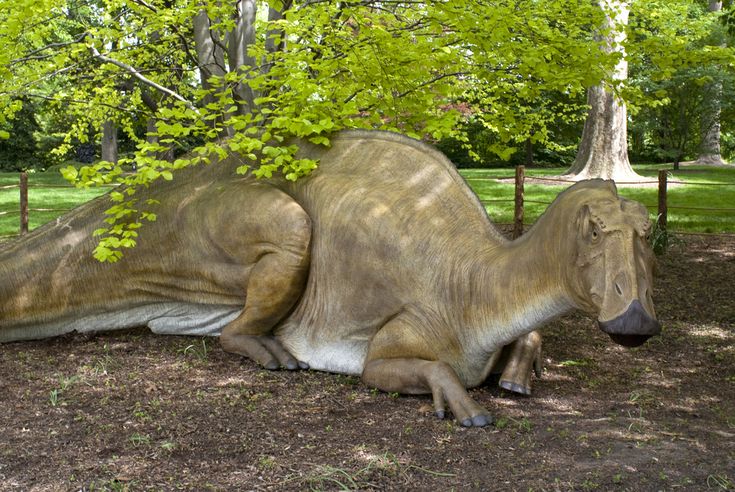
Parrosaurus Missouriensis is now regarded as the state dinosaur of Missouri. This massive plant-eater wasn’t always known by this name though – scientists have reclassified it several times over the decades. Originally thought to be a sauropod, later study determined that it was actually a hadrosaur, or “duck-billed” dinosaur.
The 30-foot-long plant eater roamed the Earth about 77 million years ago and is estimated to have had about one-thousand teeth and weighed three to four tons. Imagine encountering something that massive just munching on ancient plants where your local grocery store now sits! Bones of the species were discovered in 1942, at what later became known as the Chronister Dinosaur Site near Glen Allen, Missouri, marking the first known discovery of dinosaur remains in Missouri.
The Missouri Tyrannosaur – A Fearsome Predator’s Trace
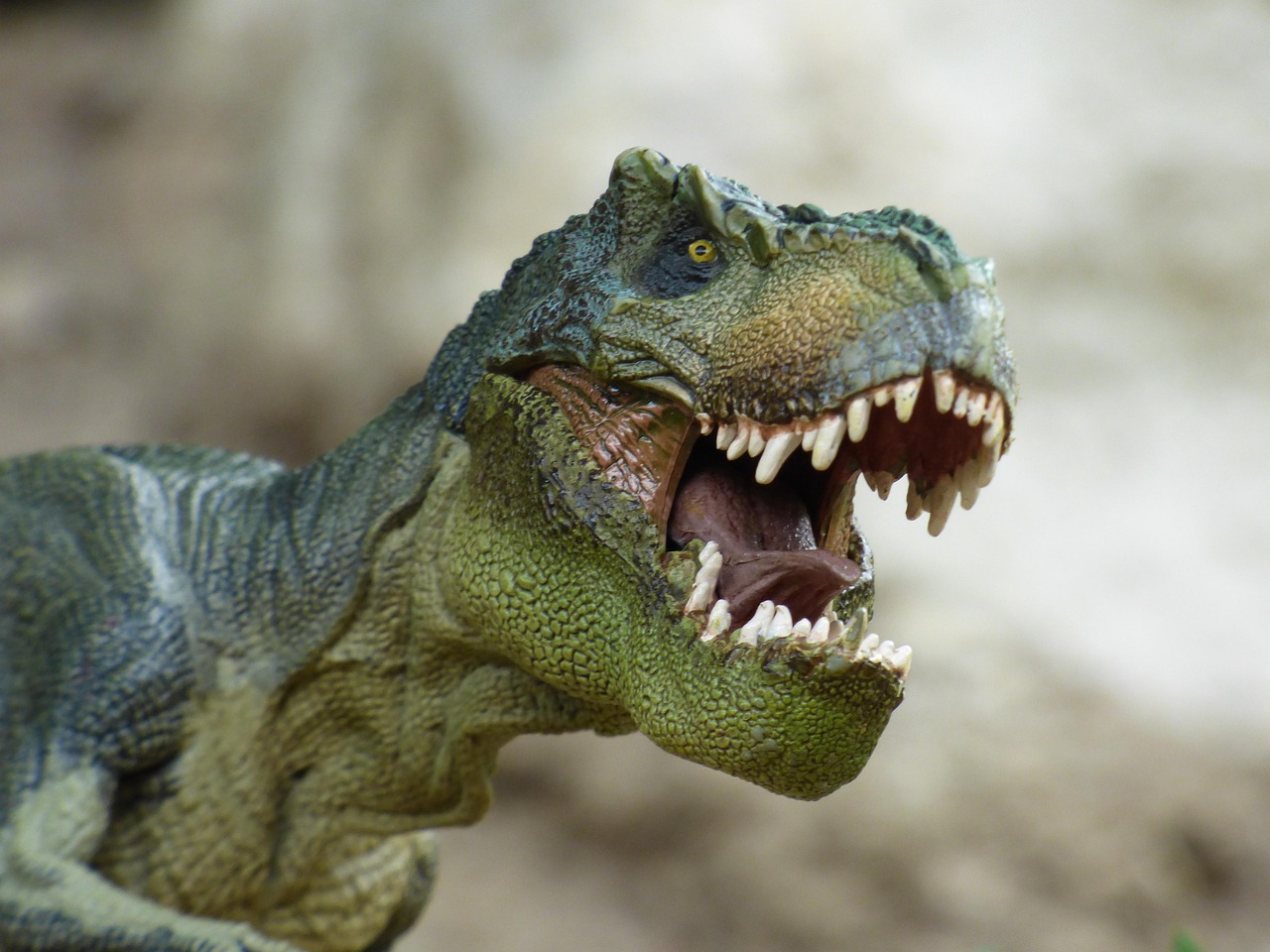
While no complete skeleton has been found, paleontologists have discovered a tooth at the Chronister site that resembles one of a Tyrannosaurus – though it may be from some other kind of big meat-eating theropod. This discovery is absolutely thrilling because it suggests that Missouri was once home to massive predatory dinosaurs that could have stalked the gentle giants like Parrosaurus.
Teeth belonging to a member of the Tyrannosauroidea have been found at the site, confirming that these apex predators did indeed prowl the ancient landscapes of what’s now Missouri. The thought that a creature similar to the mighty T-Rex once hunted where Missouri families now have backyard barbecues is both fascinating and slightly terrifying. These massive carnivores would have been the ultimate predators of their time, using their powerful jaws and razor-sharp teeth to take down even the largest herbivores.
Missouri’s Dromaeosaur – The Feathered Raptor
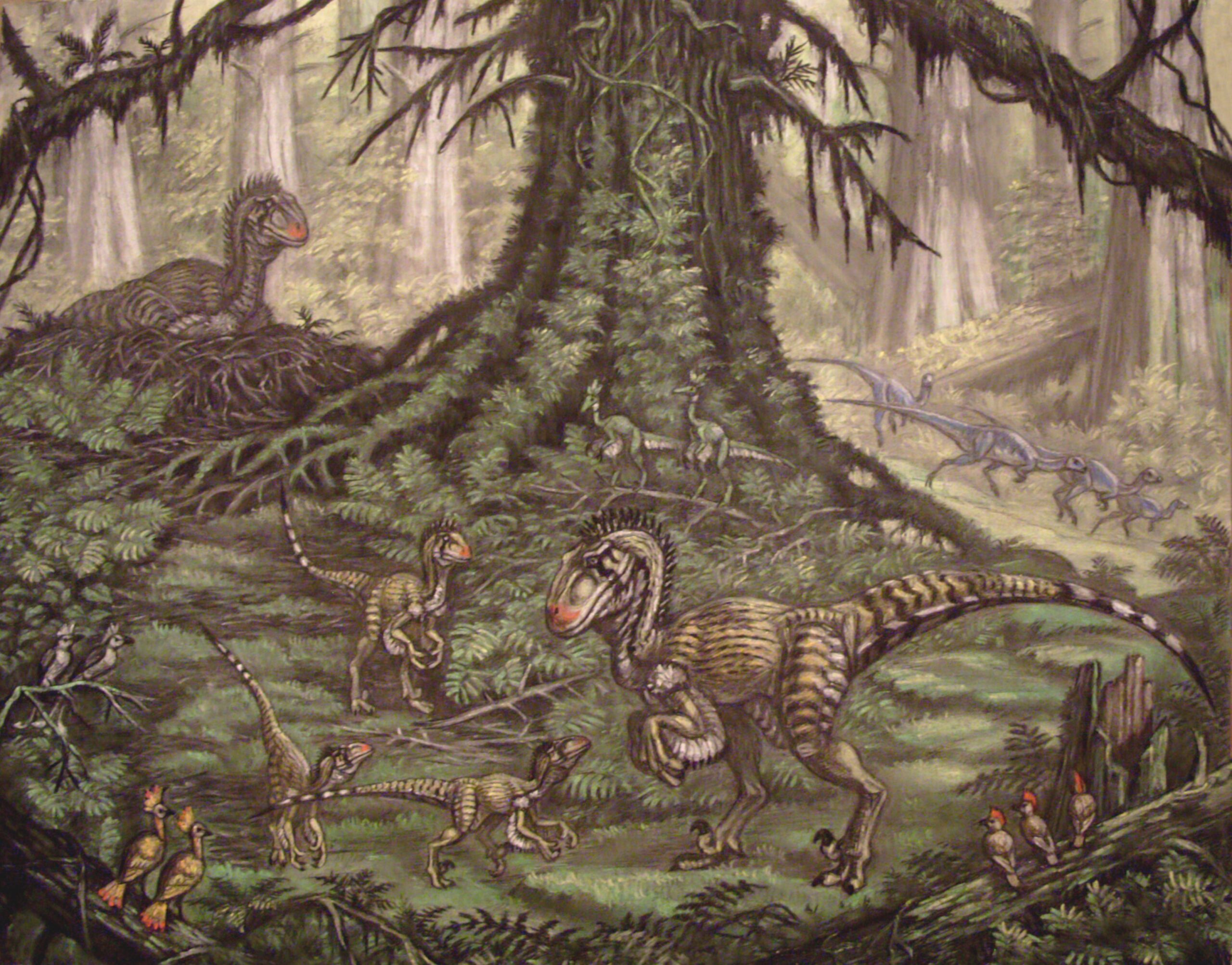
Bone fragments of a dromaeosaur have been unearthed in the Chronister site area, adding another incredible predator to Missouri’s prehistoric roster. Paleontologists found bone fragments of an unidentified member of the Dromaeosauridae family at the Chronister site, though very little is known about the particular dinosaur that left behind those fossils. Generally, though, dromaeosaurids were small or medium feathery theropods.
These dinosaurs were bipedal carnivores that probably chased down their prey, then used their claws to immobilize the animal while biting it to death. Some of them were the size of turkeys, like Velociraptor, while others were tall enough to look a human in the eye. Picture these intelligent, pack-hunting dinosaurs with their distinctive sickle-shaped claws stalking through the ancient Missouri landscape. Unlike the Hollywood versions, these creatures were likely covered in colorful feathers and were incredibly smart hunters that worked together to bring down much larger prey.
Unknown Hadrosaurs – Additional Duck-Bills
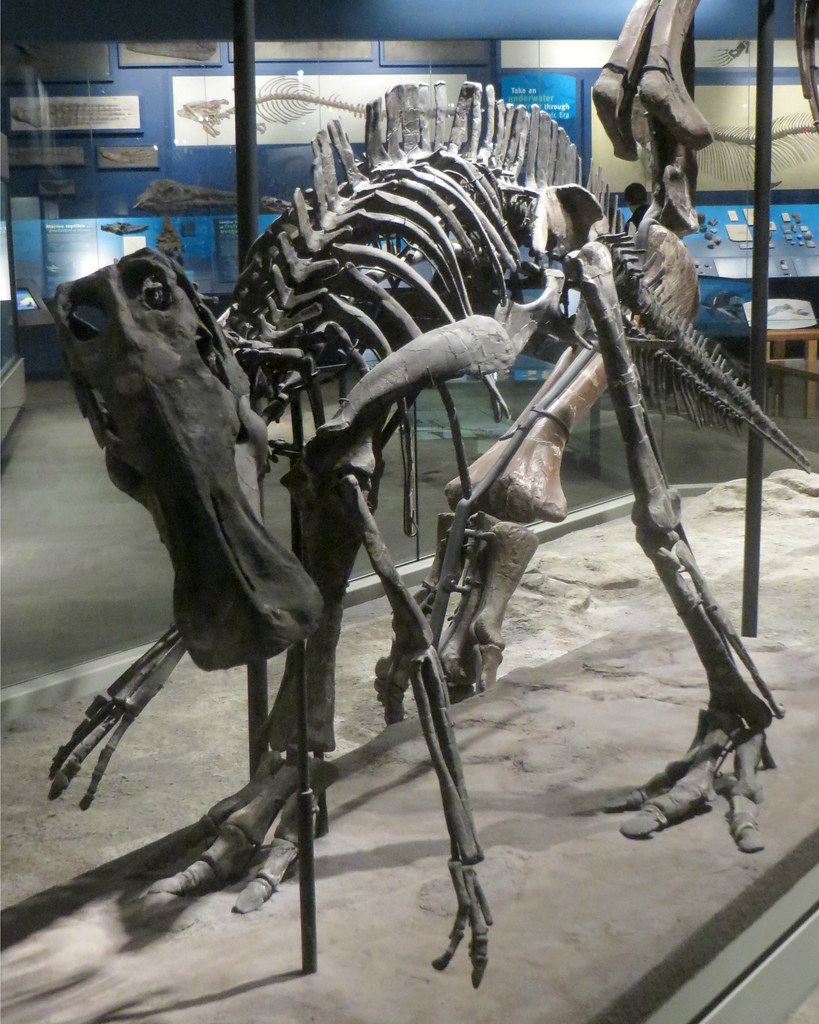
While the Parrosaurus missouriensis was clearly identified, remains of other unknown hadrosaurids were also found in Missouri. Given that the remains came from the same time as the Parrosaurus, the remains may have belonged to that species. However, scientists can’t rule out the possibility that Missouri was home to multiple species of these duck-billed giants.
They could have also been from any number of hadrosaurs that lived throughout this part of North America during that era. This means Missouri might have been like a prehistoric park filled with different varieties of massive, peaceful herbivores. Imagine herds of these creatures, each species slightly different from the others, wandering through lush ancient forests and feeding on the abundant plant life that thrived in Missouri’s warm, humid climate millions of years ago.
Dromaeosaurid

At the Chronister site, paleontologists uncovered bone fragments belonging to an unidentified member of the Dromaeosauridae family. While little is known about the specific dinosaur that left these remains, dromaeosaurids in general were small to medium-sized feathered theropods.
These agile predators walked on two legs and likely pursued their prey at speed, using their sharp claws to pin down victims before delivering lethal bites. Their size varied widely—some, like Velociraptor, were no bigger than a turkey, while others could stand eye-to-eye with a human. Continued excavations at the Chronister site and surrounding areas may one day reveal more about the species these fossils represent.
Why Missouri’s Dinosaur Discoveries Are So Rare
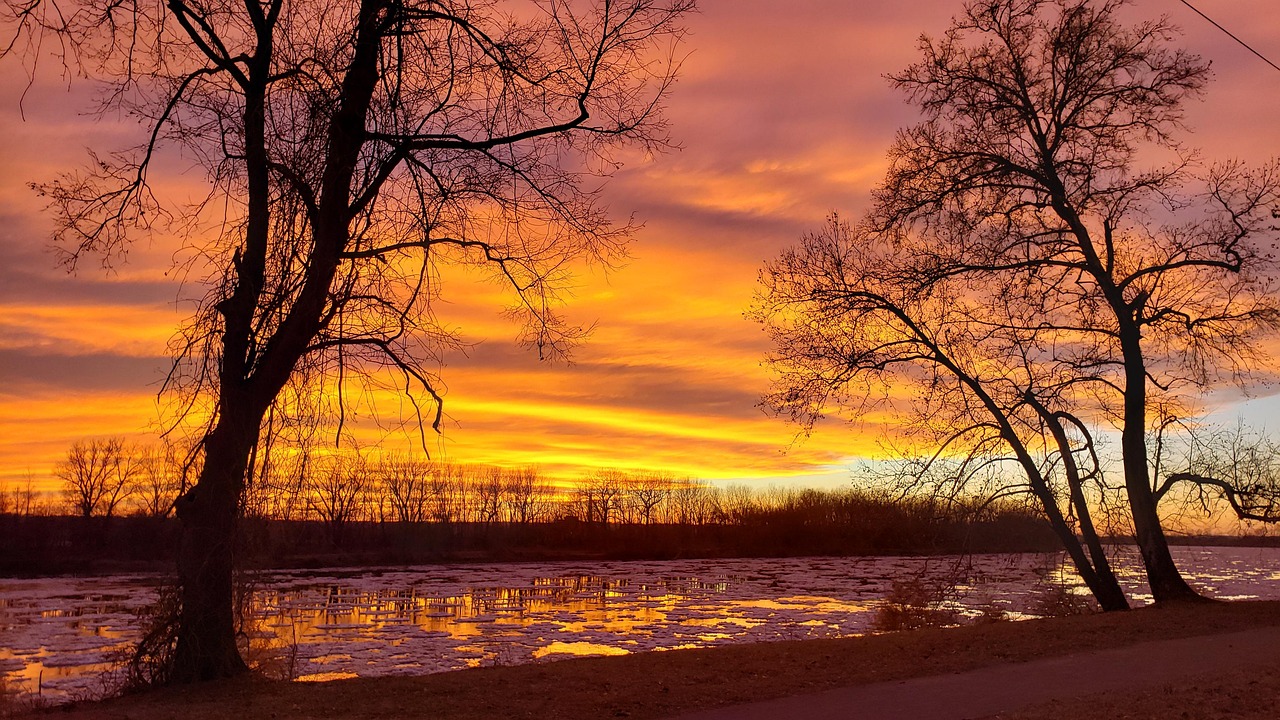
One paleontologist from St. Louis currently working at the dig site said it was “pretty much a miracle” that dinosaur bones were found in Missouri, because the state’s soft soil has resulted in the deterioration of most prehistoric remains. This makes every fossil discovery in Missouri incredibly precious and scientifically valuable.
Most of the dinosaur age sediment rock in Missouri has been weathered away and the only reason that paleontologists are finding dinosaurs where they’re finding them is because the ground dropped for some reason, maybe due to faulting. While much of Missouri lies upon rocks from the Paleozoic or Precambrian eras, the Chronister site is situated over Mesozoic rock from the Upper Cretaceous period, although much of the sediment from that time period has eroded away. This geological quirk created a perfect time capsule that preserved these ancient treasures for us to discover today.
The Chronister Site – Where Missouri’s Dinosaur Story Began

The first tracings of dinosaurs in Missouri were found in the 1940s on the Chronister family’s property when they were digging a well. Stewart observed several neatly stacked bones the family had found while digging, recognized them as being dinosaur bones, and found more bones 9 feet below the surface, marking the first known discovery of dinosaur remains in Missouri.
Paleontologist Peter Makovicky believes they have uncovered what’s probably a mass death locality, where they have a herd of dinosaurs dying and being buried together, with individuals of different ages. This suggests that Missouri’s ancient landscape witnessed a catastrophic event that simultaneously killed multiple dinosaurs, preserving them together in what would become an incredibly important fossil site. Scientists can start looking at how these dinosaurs grew, start to understand a little bit about their biology and their possible herd structure, which is unique for a site east of the Great Plains where most North American dinosaur knowledge comes from out west.
Sainte Genevieve Museum Learning Center – Your Window to Missouri’s Prehistoric Past
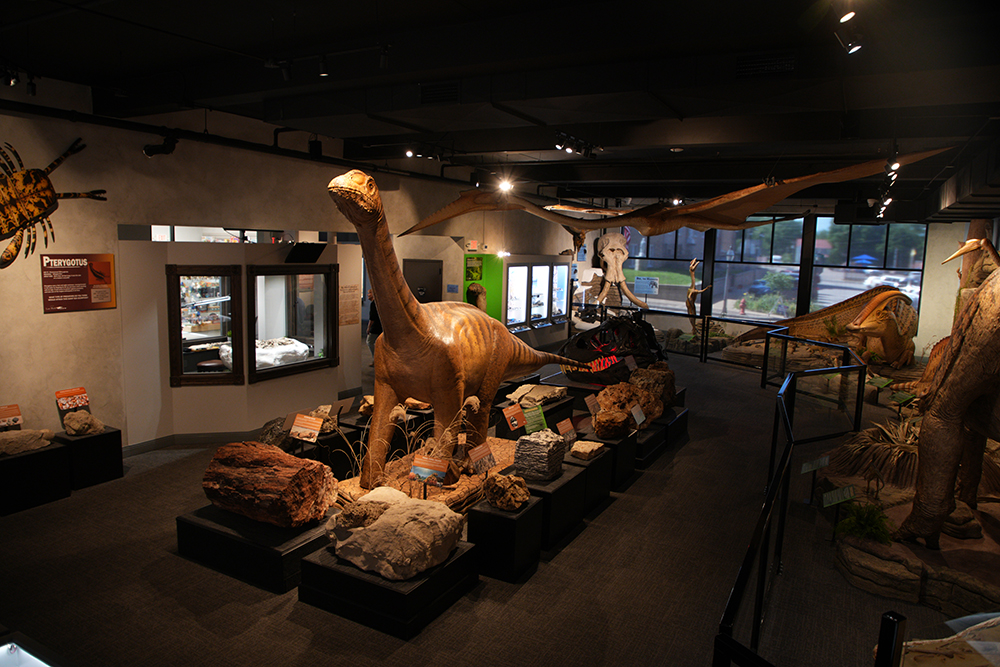
Sainte Genevieve Museum Learning Center is home to the juvenile specimen, and its laboratory is viewable to the public. Starting in December, museum visitors are able to watch paleontologists and other scientists prepare the fossils. This isn’t just static displays – you can actually watch real scientists doing real paleontology work!
The Sainte Genevieve Museum Learning Center holds the title of the official Missouri Dinosaur Visitor’s Site. Located one hour from St. Louis, Sainte Genevieve Museum Learning Center lets families visit with dinosaurs, explore ancient cultures and learn the history of the hometown, where you and your family can go back millions of years in a matter of minutes. Visitors can see a large model of the dinosaur and others, and visit their lab where you can view scientific studies being conducted on dinosaur bones and real fossils.
Field Museum in Chicago – Where Missouri’s Giants Rest

The adult dinosaur specimen will be shipped off to the Field Museum in Chicago for preparation and further study. The dinosaur was excavated by a team including Dr. Pete Makovicky of the University of Minnesota and Akiko Shinya of the Field Museum, and the specimen was transported to the Field Museum in Chicago where it will be cleaned, studied and eventually displayed.
In October, the excavation team lifted the adult dinosaur’s body, which is about the size of a Volkswagen weighing 2,000 pounds, from the ground using a crane. The largest block of the dinosaur weighed 2,500 pounds and was excavated with the help of a crane. The sheer size and weight of these fossil blocks shows just how massive these ancient creatures were and why it takes such careful, methodical work to extract them safely from the ground.
Smithsonian Institution – Where Missouri’s First Dinosaur Lives
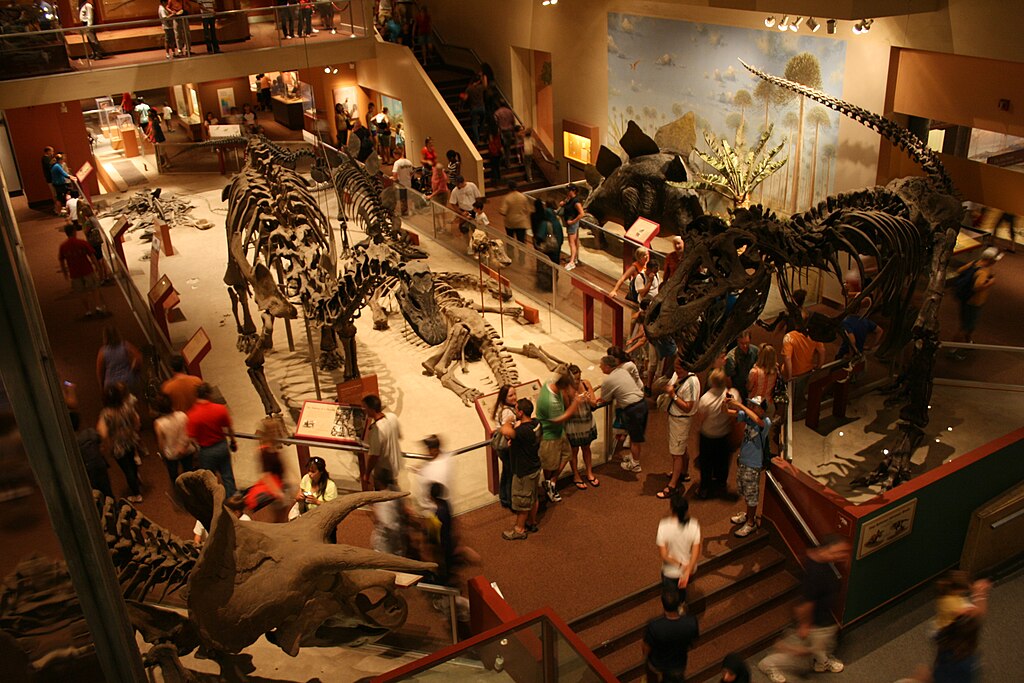
Some of the species’ bones found at the Chronister Dinosaur Site are housed in Washington, D.C.’s Smithsonian Institution. When bones were first discovered in the 1940s, Dan Stewart of the Missouri Geological Survey convinced the Chronister family to ship the bones to the Smithsonian National Museum of Natural History. In 1945, Smithsonian paleontologists Charles Gilmore and Dan Stewart suspected the bones belonged to a sauropod.
The fossils found in the 1940s were sent to the Smithsonian National Museum of Natural History, where Mrs. Chronister sold most of the bones to the U.S. National Museum, which later became the Smithsonian Institution. Stewart reported his discovery to the Smithsonian Institution, which bought the remains – thirteen vertebrae of a dinosaur’s tail – from Chronister for US$50, which was later used to purchase a cow. It’s amazing to think that some of the most important dinosaur fossils in American paleontology were once traded for the price of farm livestock!
Conclusion

Missouri’s dinosaur legacy proves that amazing discoveries can happen anywhere, even in places where you’d least expect them. From the massive duck-billed Parrosaurus that became the state’s official dinosaur to the fearsome tyrannosaur teeth and swift dromaeosaur fragments, the Show-Me State has shown us that prehistoric life was thriving here millions of years ago. These discoveries are reshaping our understanding of dinosaur distribution across North America and proving that the Midwest had its own unique prehistoric ecosystem.
Whether you visit the hands-on exhibits at Sainte Genevieve Museum Learning Center, travel to Chicago’s Field Museum to see the latest specimens, or make a pilgrimage to the Smithsonian to see where it all began, Missouri’s dinosaur story continues to unfold. Who knows what other prehistoric giants might be waiting beneath Missouri’s farmlands, just waiting for the next curious person to dig a well or explore a creek bank? What other secrets do you think Missouri’s ancient past is still hiding?


